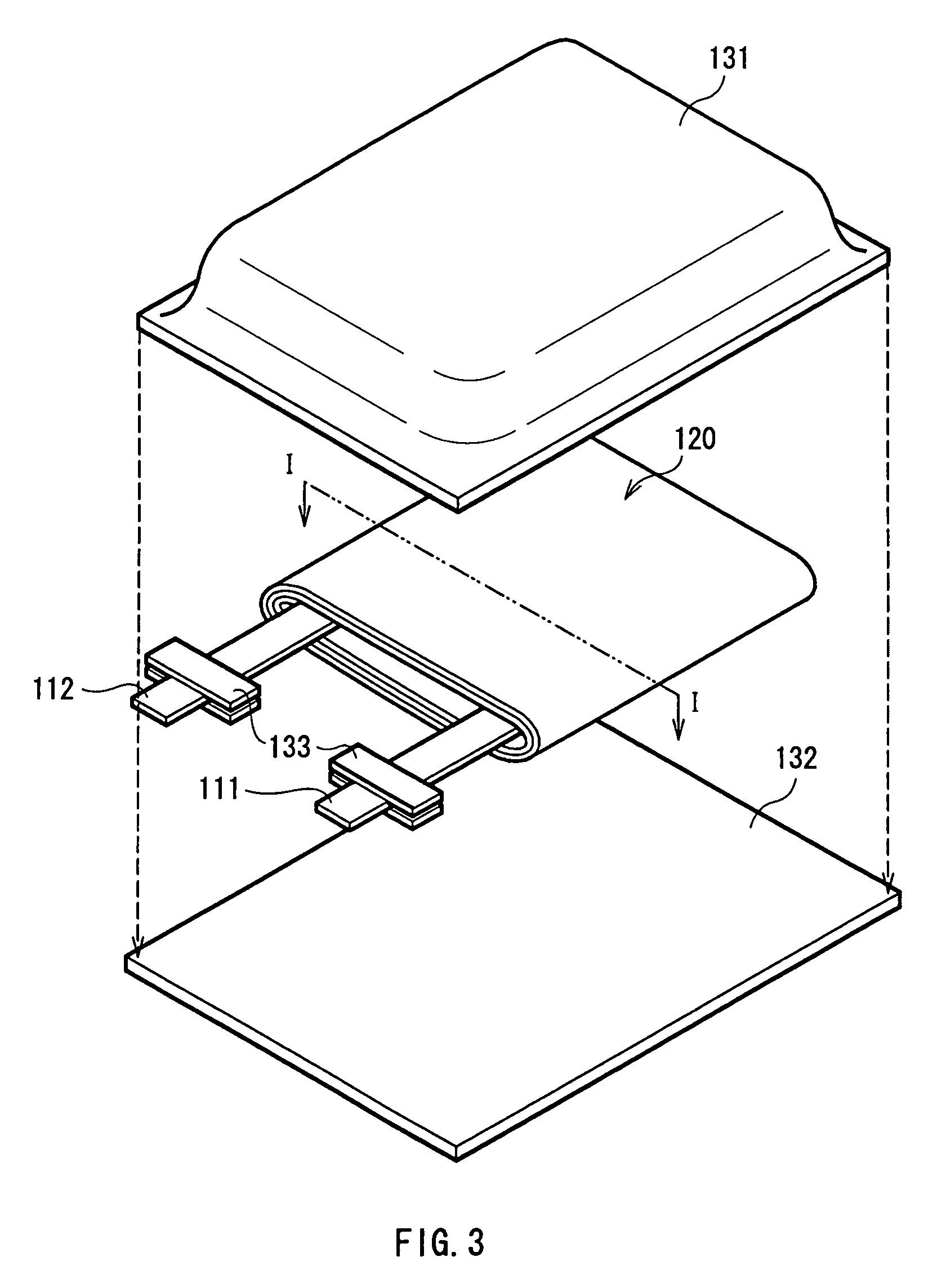Anode and battery
a technology applied in the field of anode and battery, can solve the problems of low cycle characteristics, low capacity of lithium secondary batteries, and low current collection properties, and achieve the effect of preventing an increase in impedance in batteries
- Summary
- Abstract
- Description
- Claims
- Application Information
AI Technical Summary
Benefits of technology
Problems solved by technology
Method used
Image
Examples
examples
[0074]Examples of the invention will be described in detail below referring to FIGS. 1 through 4. In the following examples, like components are donated by like numerals as of the above embodiment.
examples 1-1 through 1-5
[0075]Secondary batteries shown in FIGS. 3 and 4 were formed. At first, the anode active material layer 12 made of silicon was formed on the anode current collector 11 made of copper foil with a thickness of 15 μm by a sputtering method. Next, lithium metal was deposited on the anode active material layer 12 by a vacuum deposition method. An atmosphere at the time of depositing lithium metal was less than 1×10−3 Pa, and the deposition speed was 5 nm / s to 10 nm / s. The amount of deposited lithium metal, that is, the amount of lithium inserted into the anode active material layer 12 in advance was 5% of the anode capacity.
[0076]After lithium metal was deposited, an inactivated gas which included a mixture of carbon dioxide and argon at a volume ratio of 20:80 was introduced into a vacuum chamber at a flow rate of 50 cm3 / min (1 atm, 25° C.), and then a process of inactivating the anode active material layer 12 was carried out. After that, an argon gas was introduced into the vacuum cham...
examples 2-1 through 2-5 , 3-1 through 3-5 , 4-1 through 4-5
Examples 2-1 through 2-5, 3-1 through 3-5, 4-1 through 4-5
[0086]Secondary batteries of Examples 2-1 through 2-5, 3-1 through 3-5 and 4-1 through 4-5 were formed as in the case of Examples 1-1 through 1-5, except that the amount of lithium inserted into the anode active material layer 12 in advance was changed to 10%, 20% and 30%. Moreover, as Comparative Examples 2-1 through 2-5, 3-1 through 3-5 and 4-1 through 4-5, secondary batteries were formed as in the case of Examples 2-1 through 2-5, 3-1 through 3-5 and 4-1 through 4-5, except that no inactivation process by an inactivated gas was carried out. A charge-discharge test was carried out on the secondary batteries of Examples 2-1 through 2-5, 3-1 through 3-5 and 4-1 through 4-5 and Comparative Examples 2-1 through 2-5, 3-1 through 3-5 and 4-1 through 4-5 as in the case of Examples 1-1 through 1-5 to determine their capacity retention ratio in the 50th cycle and measure the degree of the variations by the standard deviation. The ob...
PUM
| Property | Measurement | Unit |
|---|---|---|
| thickness | aaaaa | aaaaa |
| flow rate | aaaaa | aaaaa |
| diameter | aaaaa | aaaaa |
Abstract
Description
Claims
Application Information
 Login to View More
Login to View More - R&D
- Intellectual Property
- Life Sciences
- Materials
- Tech Scout
- Unparalleled Data Quality
- Higher Quality Content
- 60% Fewer Hallucinations
Browse by: Latest US Patents, China's latest patents, Technical Efficacy Thesaurus, Application Domain, Technology Topic, Popular Technical Reports.
© 2025 PatSnap. All rights reserved.Legal|Privacy policy|Modern Slavery Act Transparency Statement|Sitemap|About US| Contact US: help@patsnap.com



